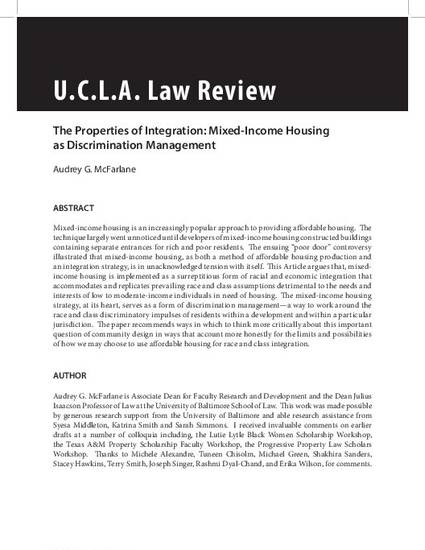
- Housing Law and
- Law
Mixed-income housing is an increasingly popular approach to providing affordable housing. The technique largely went unnoticed until developers of mixed-income housing constructed buildings containing separate entrances for rich and poor residents. The ensuing “poor door” controversy illustrated that mixed-income housing, as both a method of affordable housing production and an integration strategy, is in unacknowledged tension with itself. This Article argues that, mixedincome housing is implemented as a surreptitious form of racial and economic integration that accommodates and replicates prevailing race and class assumptions detrimental to the needs and interests of low to moderate-income individuals in need of housing. The mixed-income housing strategy, at its heart, serves as a form of discrimination management—a way to work around the race and class discriminatory impulses of residents within a development and within a particular jurisdiction. The paper recommends ways in which to think more critically about this important question of community design in ways that account more honestly for the limits and possibilities of how we may choose to use affordable housing for race and class integration.
Available at: http://works.bepress.com/audreymcfarlane/22/
